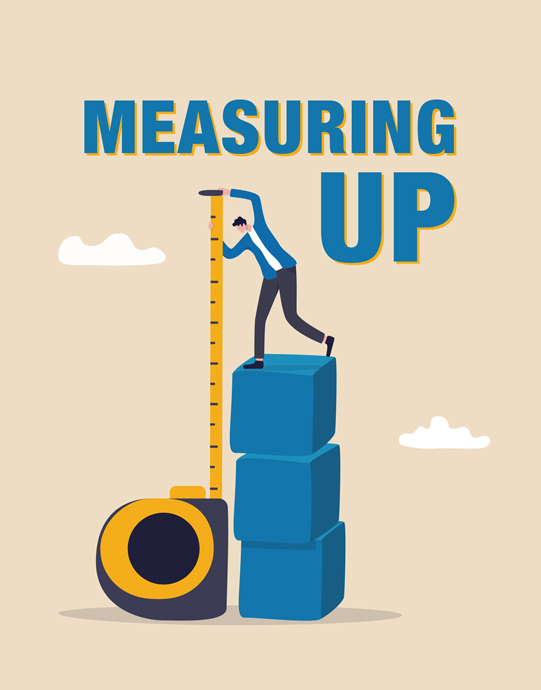By Jowanna Daley
How to improve your coaching effectiveness by tracking measurable results.
As a life coach, your ultimate goal is to help clients achieve their desired outcomes, whether it’s improving their relationships, career, health or overall well-being. However, generating measurable results for your clients can be challenging, especially when dealing with intangible concepts like personal growth and mindset shifts. That’s why it’s important to develop a structured and effective methodology for tracking progress and measuring success.
What Is a Measurable Result?
A measurable result is a quantifiable outcome of an action or event that enables you to evaluate your clients’ success or lack thereof.
Setting definable goals that track progress is one of the best ways to ensure measurable results for clients. This is a critical aspect of the coaching process because it provides you and your clients with tangible evidence of progress and helps them identify areas for improvement. It also enables you and your clients to evaluate your coaching effectiveness and make necessary adjustments. At the same time, measurable results demonstrates the value of your coaching services and can help you attract new clients in the future.
Ways to Measure Results
There are numerous ways to measure results, such as conducting regular assessments, setting specific targets, and monitoring progress through regular feedback sessions with clients. Many life coaches also use tools such as questionnaires, journals and tracking logs to record and analyze clients’ progress and help them achieve their full potential. Overall, coaches can use both qualitative and quantitative data (measurable results) together in different areas to evaluate the effectiveness of coaching programs, including client satisfaction, behavioral changes, and overall improvement in clients’ quality of life.
Pros & Cons
Delivering measurable results is incredibly beneficial for you as a coach because:
- It provides tangible evidence of your clients’ progress.
- It motivates your clients to continue to work towards their goals.
- It allows you to track clients’ progress and identify areas where they may need additional support.
- It opens up the line of communication.
- It deepens your understanding of your clients’ circumstances.
- It strengthens the bond between you and your clients.
There are some downsides to watch for when measuring results:
- Creating a plan can be time consuming.
- Measuring results can be a demotivator if clients are not meeting deadlines.
- Clients can value meeting the milestones more than the underlying growth that comes from reaching the milestones.
- Creating plans and measurable metrics requires a specialized skillset.
- The results are only as effective as the quality of the input.
Creating an Actionable and Measurable Plan
Following are some structured ways to track and measure success:
- Objectives and Key Results (OKR) is a framework for setting goals and measuring progress often used in business settings, but it can be used to measure client milestone and your effectiveness as a coach. The objectives are the goals to be achieved, and the key results are the measures of progress toward those goals.
- 360 Assessment Tools are powerful for gathering feedback from multiple sources to evaluate an individual’s personal and professional performance. It includes a comprehensive survey that collects information from the individual, peers, direct reports, supervisors, and other stakeholders. The collected data is then analyzed and presented in a report highlighting the individual’s strengths and areas for improvement. Life coaches can utilize this tool to gain valuable insight into clients’ behaviors, communication styles and leadership skills. By receiving feedback from various sources, the clients often identify new areas for performance improvements and make necessary changes to increase their overall effectiveness.
- A Coaching Action Plan is vital for individuals seeking to achieve their goals. This document outlines the specific steps that must be taken to reach a desired outcome. It provides a structure for the client to follow detailing the actions that must be taken and the timeframe in which they must be completed.
Key Tips to Creating Measurable Results
Following are some tips to keep in mind when starting the process:
- Establish clear goals and objectives that are time-based, specific, measurable and achievable.
- Start by assessing your clients’ current situations and identifying the areas where they need the most help.
- Track progress regularly using the proper tools and metrics.
- Ensure that the goal-tracking process does not overtake the coaching sessions by limiting the metrics you track.
Moving Forward
By defining clear goals and using specific metrics to track progress, you can provide clients with a sense of accomplishment and the motivation to continue striving for success. With the right tools, techniques and focus on measurable outcomes, those you work with can achieve their dreams and become the best version of themselves. Here’s to empowering your clients to take control of their lives!
Jowanna is a business and personal coach, consultant, freelance blogger, and personal brand photographer. Jowanna uses her 20-plus years of business, information technology, business analysis, and project management experience to serve solopreneurs, microbusinesses, and professionals through consulting, coaching, training, and workshops. She is also a freelance blogger who serves corporate and non-corporate clients. Visit her website at https://www.jowannadaley.com/about/.

